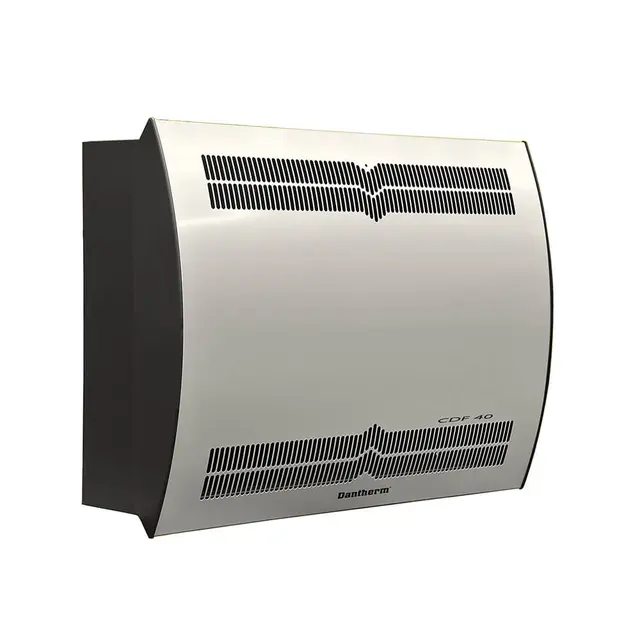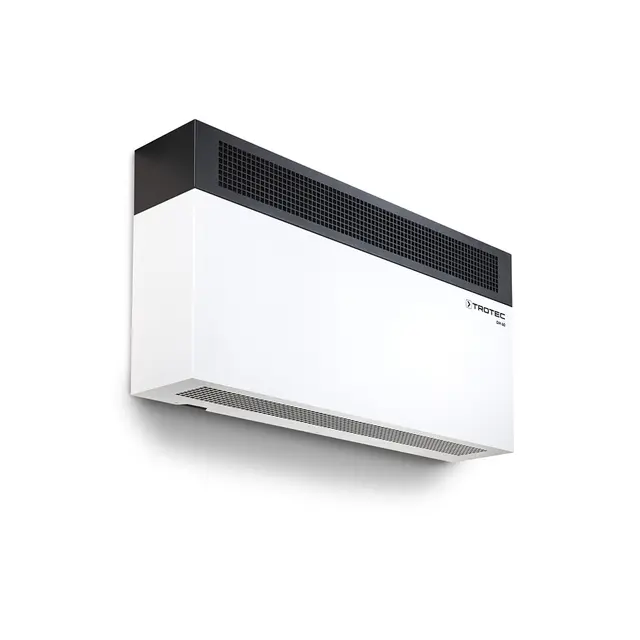Lowering temperatures to reduce energy consumption in museums and galleries
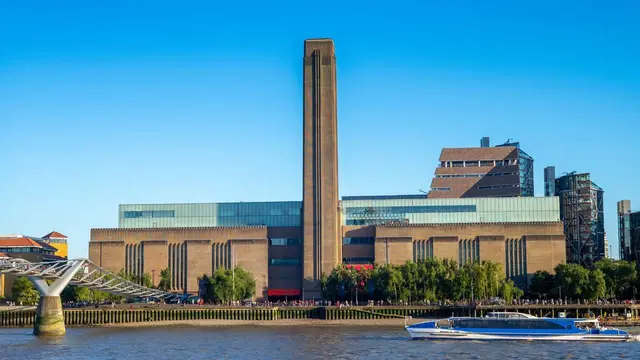
- Home
- Insights
- Humidity control and drying insights
- Lowering temperatures to reduce energy consumption in museums and galleries
While operating museums and galleries at lower temperatures can generate exceptional savings, it can also cause indoor humidity to soar. In this article, we discuss how to efficiently control the climate in these settings to preserve buildings and the precious contents within.
Rising energy prices are not just affecting households and businesses, museums and galleries are also finding it difficult to contend with sharp increases in electricity tariffs.
With an obligation to create a comfortable environment both for employees, guests and the priceless artwork within, museums and art galleries consume a significant amount of energy carefully regulating relative humidity and temperature throughout the day.
What savings can lower temperatures generate?
To take strides to reduce soaring energy bills, some European sites that rely on heaters to warm their premises are opting to reduce operating temperatures by a couple of degrees celsius.
Although this change may seem negligible, this is having an immediate and positive financial impact, as a temperature drop of just one degree can reduce energy bills by as much as 10%.
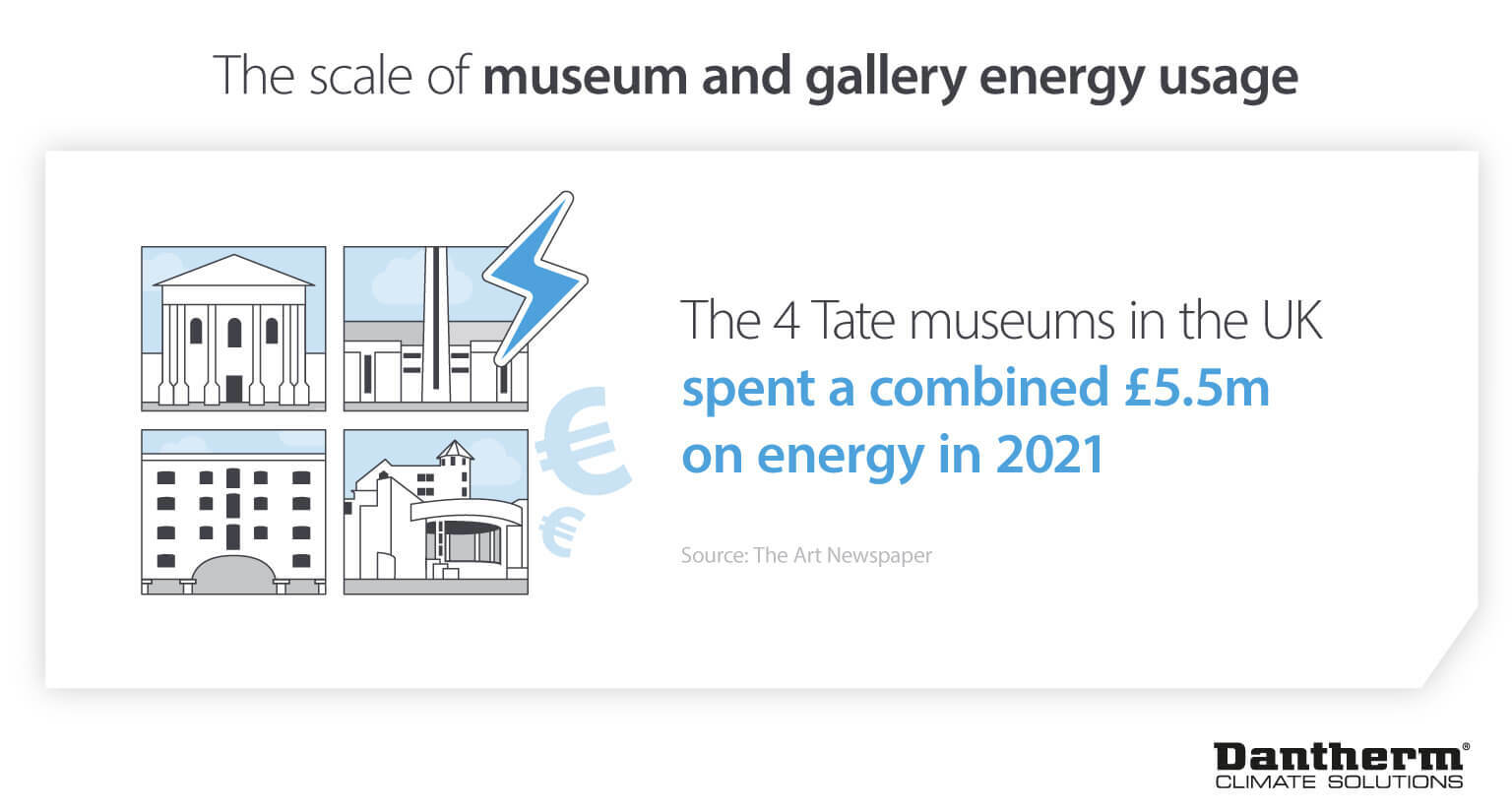
Lowering temperatures does not just help minimise running costs, limiting fuel and energy usage benefits the environment, reducing the carbon footprint of these spaces.
However, despite the positive influence this can have on museums’ environmental credentials and chequebooks, cooler temperatures lead to a rise in humidity levels – a crucial metric to control when storing and showcasing valuable items such as ancient artefacts, priceless panel paintings and vintage vehicles.
How does humidity affect museums?
Temperature and humidity are closely linked. When the air temperature is reduced, the amount of moisture the air can contain shrinks. As this happens, condensation begins to form inside these sensitive spaces.
The presence of excess moisture within galleries and museums can cause untold damage to the buildings themselves. As water seeps into cracks and hard-to-reach spaces, wood rots, mould takes hold and, over time, the structure of these facilities deteriorates.
Water damage restoration work is a costly expense that often exceeds the savings realised by lowering operating temperatures. Beyond the cost of the repairs themselves, consider the logistics involved in temporarily transporting priceless articles elsewhere. Or the admission fees lost from days or weeks of closures.
More importantly, the priceless artefacts housed within these spaces are often highly susceptible to high relative humidities. One-of-a-kind artwork can become damaged beyond repair. Fragile and historic artefacts can be totally destroyed. Metal objects can rust and erode.
Repairing these precious articles does not just result in high repair costs, failing to effectively preserve museum objects can have a lasting cultural impact on current and future generations.
Of course, it is not just high moisture levels that can have severe and costly repercussions for museums. When the air is too dry, this can be just as problematic.
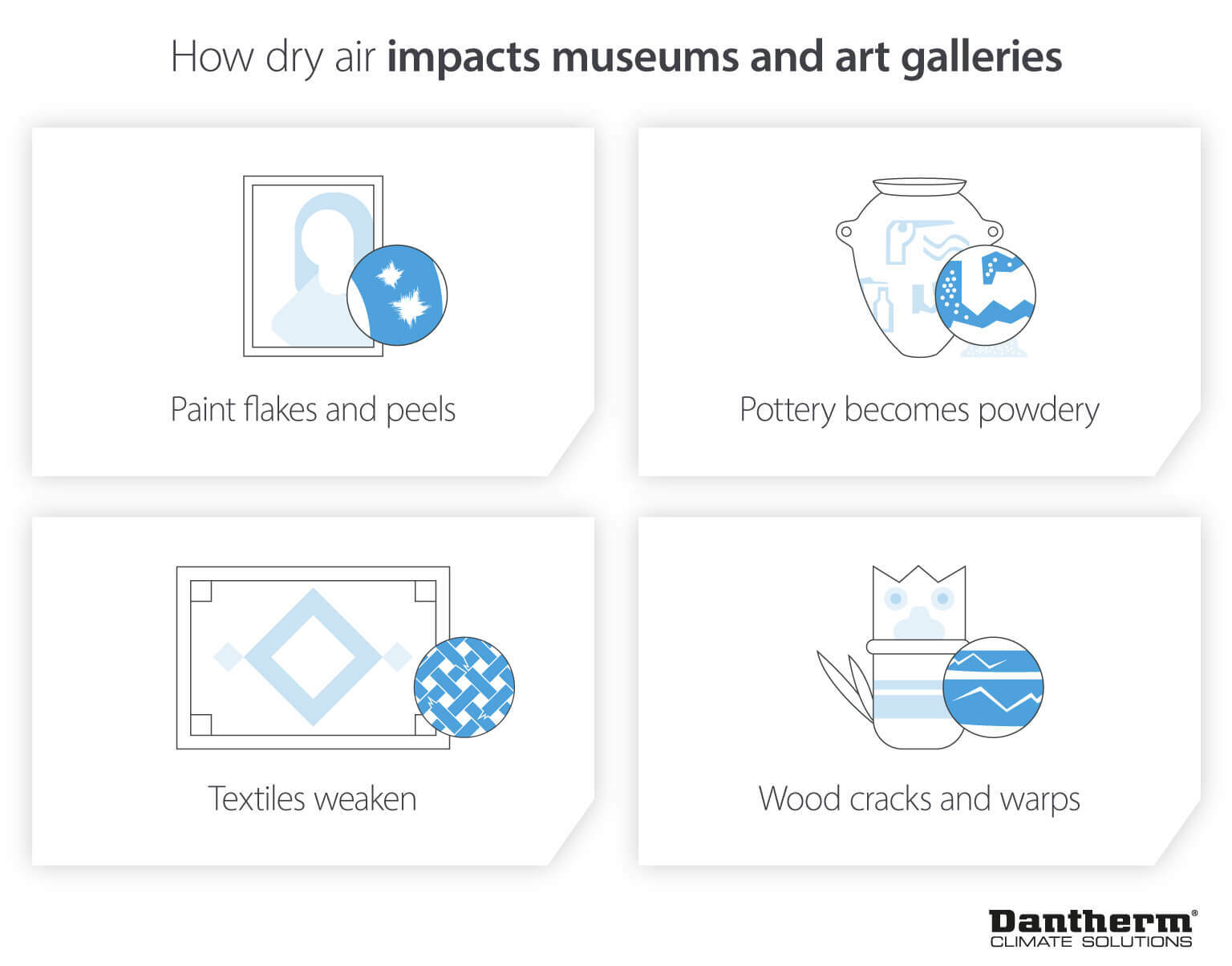
How can museums and galleries economically control their environment?
Although operating these spaces at lower temperatures does reduce energy consumption and electricity bills in a meaningful way, the damage of uncontrolled humidity levels often far outweighs potential savings.
To viably run galleries and museums at lower temperatures, it is important to establish environmental control that is both reliable and cost-effective to not exceed the savings generated.
Dehumidification solutions are optimally suited for museum and gallery climate control. Continuously processing inside air and extracting unwanted moisture, a wide range of dehumidifiers are available to suit practically any environment or collection.
This allows museums and galleries to unlock meaningful savings that lower temperature facilities can provide, while ensuring humidity is kept at optimal levels year-round.
While the cost of running this equipment can vary – depending on factors such as the cost of energy itself, the type of system, and the demands of a space – efficient Dantherm systems have generated cost savings of up to 500% compared to heaters.
It is not just important to have a dependable dehumidifier in place. For the best energy savings and the most effective preservation, a dedicated drying strategy is just as important.
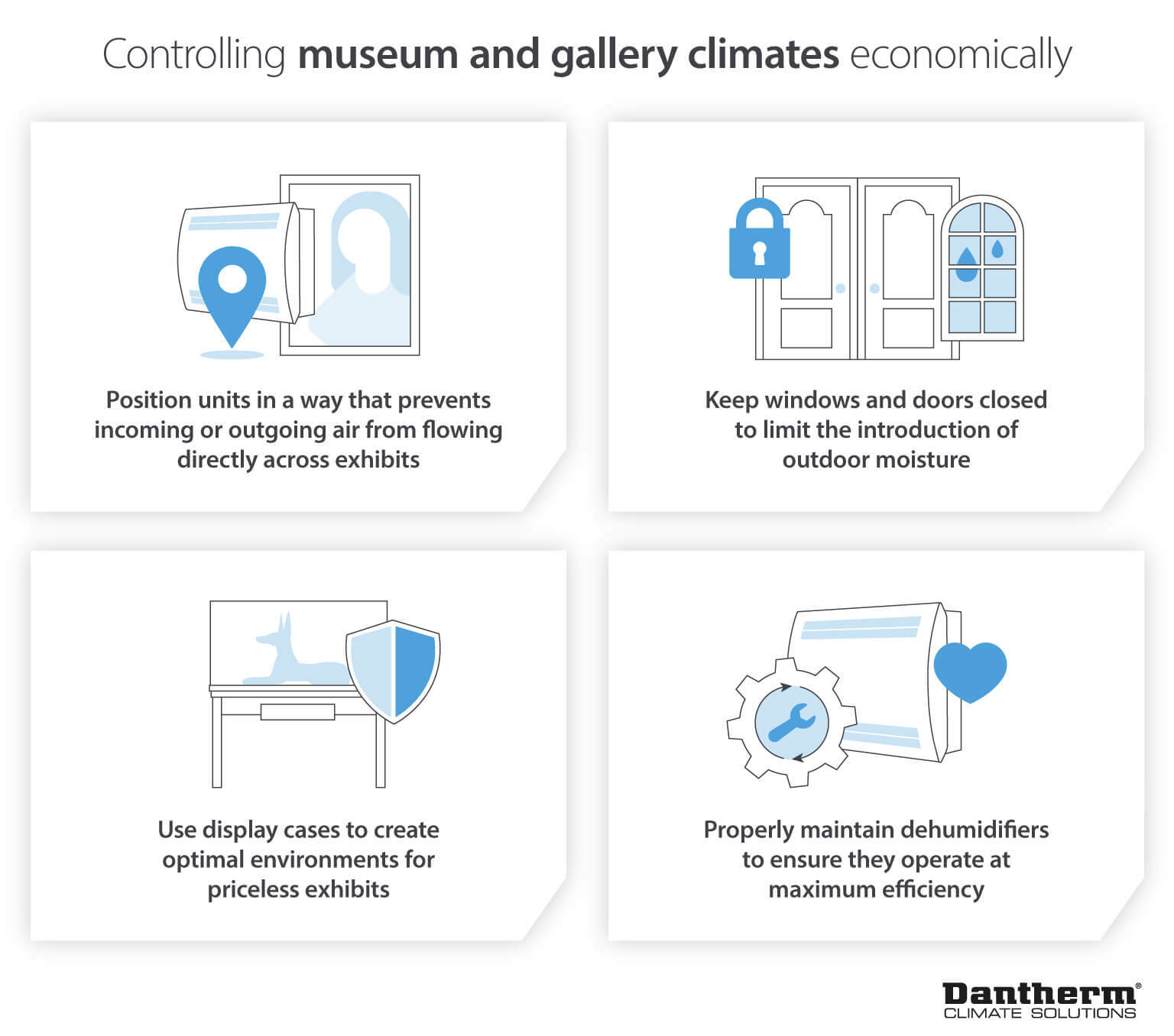
How to select the ideal dehumidifier?
While a drying strategy can be applied in practically any museum or gallery, the dehumidification unit at the core of this approach has to be more carefully considered. To choose the optimal system, operators must consider factors, such as:
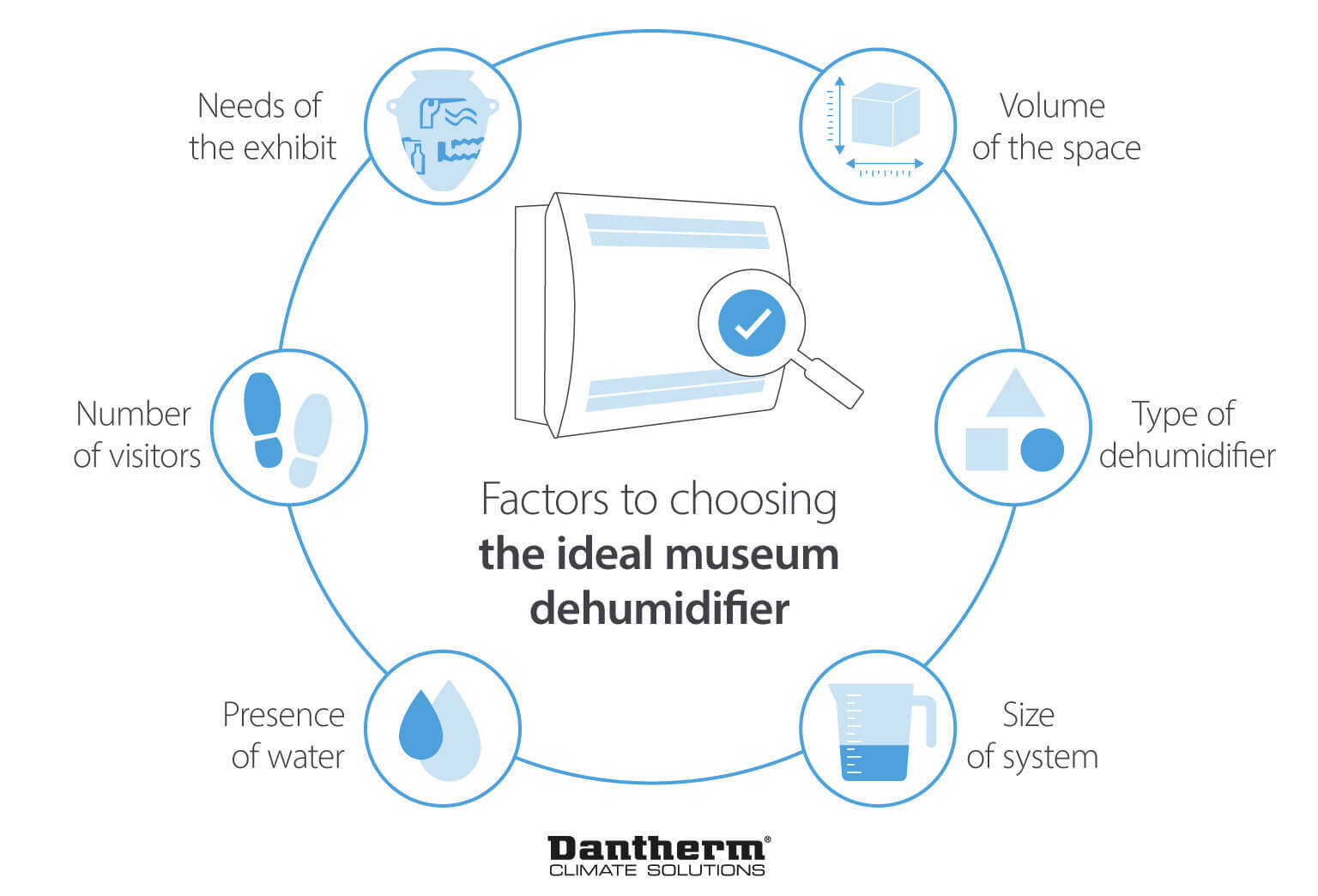
Why Dantherm is a trusted name for gallery climate control
There is no ‘cookie cutter’ approach when it comes to gallery dehumidification. To protect the priceless contents within these attractions, it is crucial to establish an effective drying strategy alongside a system fit for purpose.
As experts in climate control, Dantherm is a trusted name in museum humidity control. Beyond our more than 60 years of specialist expertise, we also have a wide range of dehumidifiers perfect for maintaining ideal environmental conditions year-round.
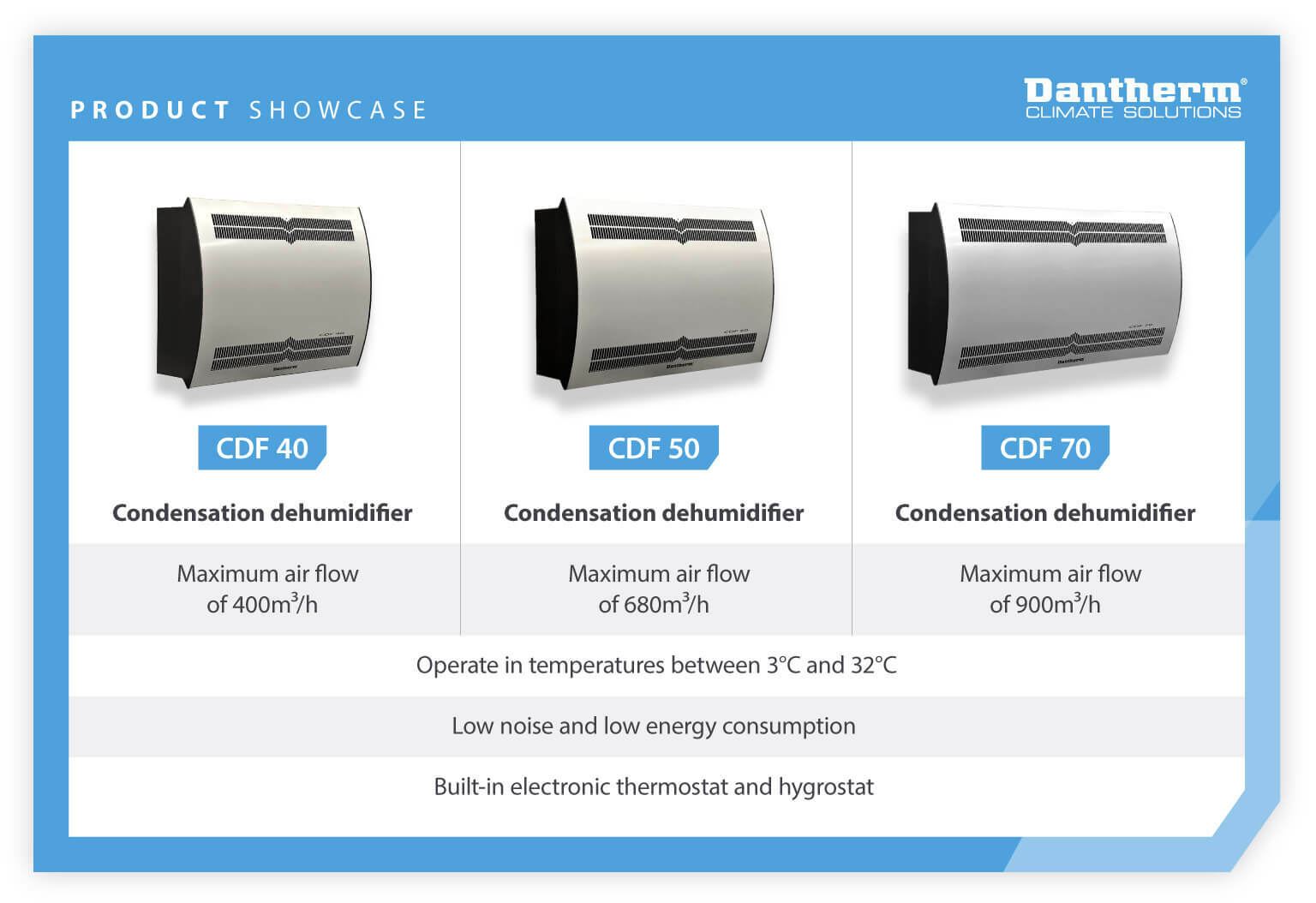
Built with efficiency, sustainability, durability and usability in mind, Dantherm dehumidifiers are helping museums and galleries preserve their precious collections while also minimising the energy consumption and environmental impact of operations.
For larger spaces, we can also provide bespoke air handling units able to manage temperature and humidity via a single centralised system.
It is not just our specialist experience and our robust lineup of quality technology that make Dantherm the standout manufacturer for museum and gallery climate control. Our vast network of support, spares and technicians can support your solution for years to come.
To learn more about our dehumidifiers, and how they can help your gallery maintain a cool and cost-effective climate, get in touch with our team today.
Related products
Featured insights
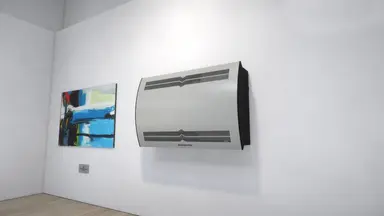
Discover how to overcome the humidity challenges of preserving your artefacts

Understanding the environment around you and how to combat humidity damage
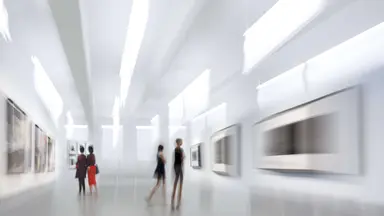
Are your valuable artefacts at risk?
Need help with choosing the right solution? Our team of over 100 climate control experts can assist.
You can also reach out or join the discussion on our Social Media. Check out our LinkedIn page.
